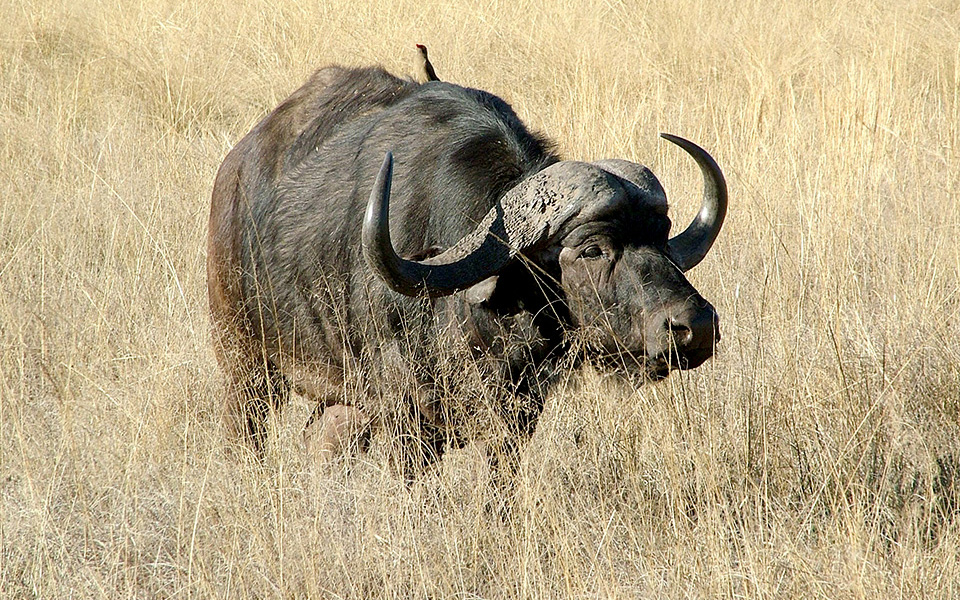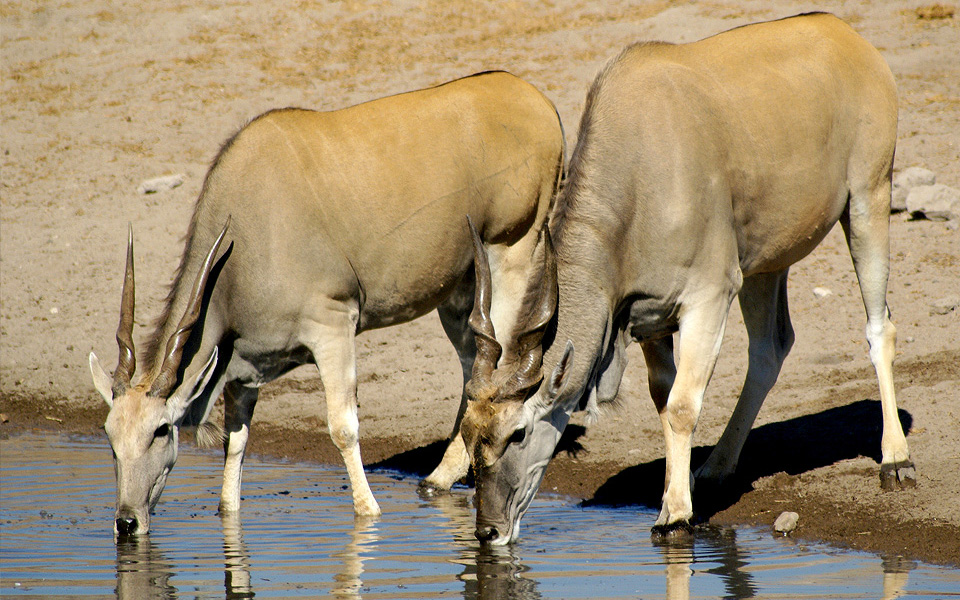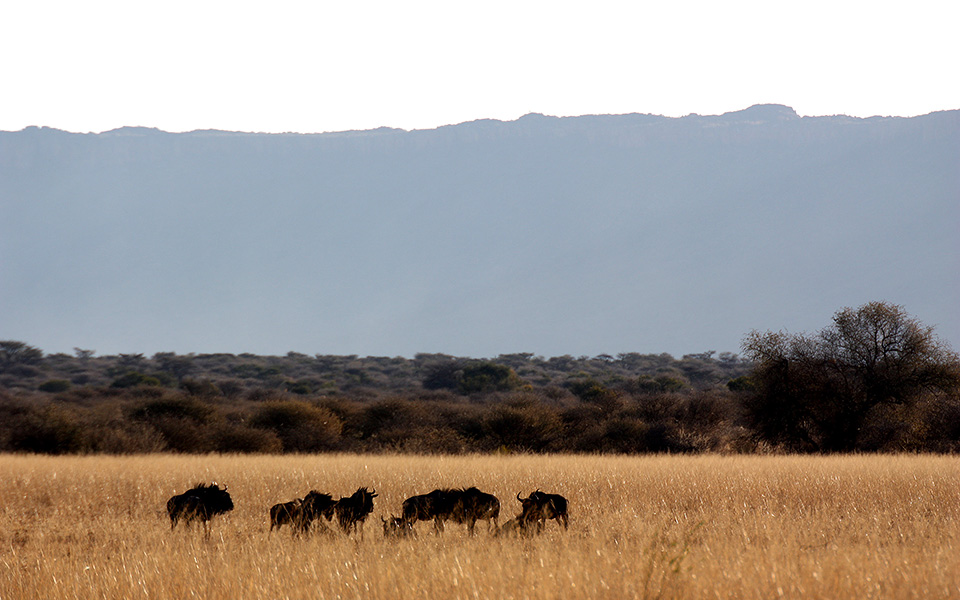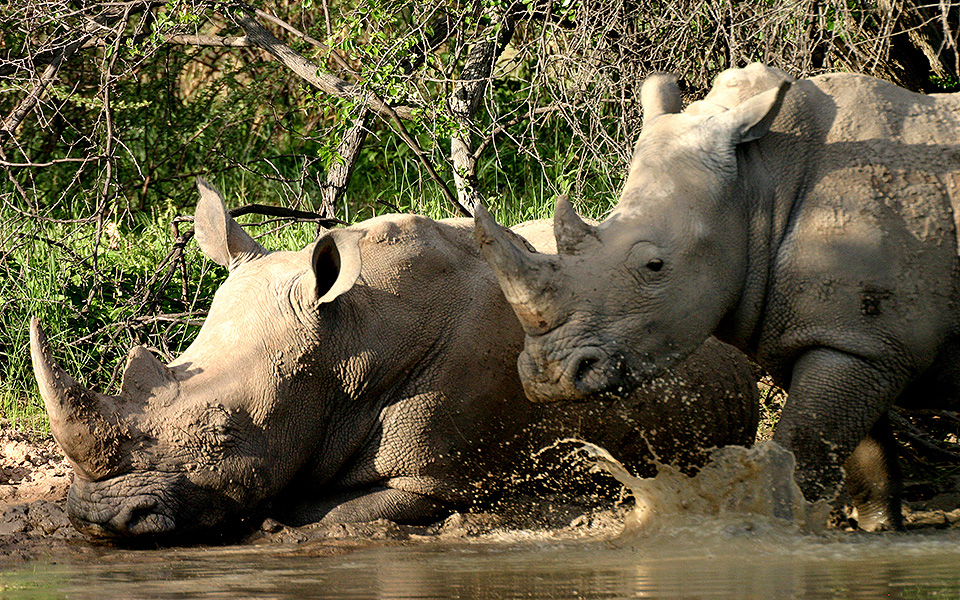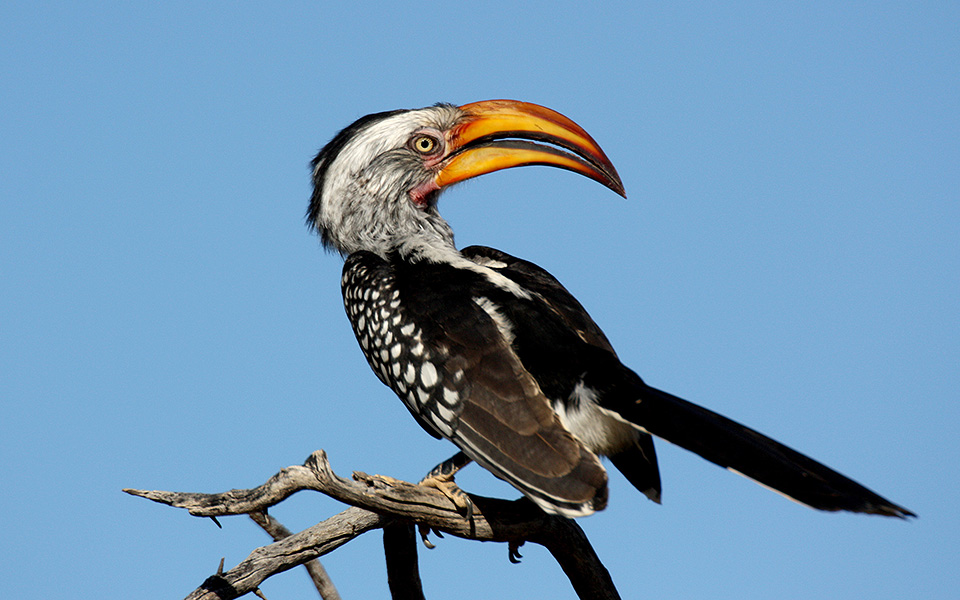Experience
The only possibility to experience the national park is on the game drives to the plateau organised by the state-owned Waterberg Plateau Rest Camp. Due to the thickness of the bush game can usually only be seen at the waterholes.
Hikes on the plateau were discontinued in an effort to take measures against rhino poaching, which started to extend to Namibia from South Africa since 2013.
Other resorts on the south-eastern slope of the Waterberg do not have permission to offer tours in the park, but patrons can join the official rest camp’s game drive as day visitors. The Waterberg Wilderness private nature reserve offers a game drive through the bush savannah at the foot of the Waterberg, where you can see game such as giraffe, oryx and blue wildebeest and where it is almost guaranteed to encounter white rhino at very close range. From the resorts on the west face of the Waterberg one only has a view of the table mountain.
There are two ways to reach the plateau on foot: on a hiking trail from the state-owned rest camp and on a guided hike from the neighbouring Waterberg Wilderness private nature reserve, which extends to the plateau and has an open border to the national park. It is rare to see animals on either of the two hikes – with the exception of baboons and rock dassies.
Birders on the other hand will have their eyes full: The variety of birds is biggest on the slopes with its wells and many trees and shrubs. A so-called vulture restaurant with a shelter is situated on the plateau. From there you can watch white-backed and lappet-faced vultures - with a lot of luck you might even spot Cape vultures, but only if an animal cadaver was laid out shortly beforehand and the drive includes a stop at the feeding place.
